iPhone 12 Pro MAX vs Samsung Galaxy Note 20 Ultra Camera Test Comparison By SuperSaf
- What's up, guys? Saf here on SuperSaf TV. And welcome to another SuperSafStyle camera comparison. This is the one everybody has been waiting for. It is the iPhone 12 Pro Max versus the Samsung Galaxy Note 20 Ultra. As always, we'll be testing out all aspects of the cameras, images, video, low light, portraits. I'll be leaving some timestamps down below, so if there is a particular section that you're interested in, you can check that out.
But don't skip, this is going to be an interesting video. Front-facing cameras, we're going to test out stabilization. So, currently, a general walk. And let's go ahead and run. Now, we are at 4K 60fps.
We're going to see if this makes much of a difference to dynamic range stabilization. So, let's go. And now we've switched over to the rear-facing cameras. And both devices do have an ultra wide camera as well, so we can switch to this. And we're getting lots more into our shot.
And they both also have a zoom camera. We have 2.5 on the iPhone, and we have 5x optical zoom on the Note. We'll test out stabilization with the primary cameras. So, just walking and now let's run. But we're also going to test out stabilization with the ultra wide cameras.
Again, a walk, now into a run. Now, we are at 4K 60fps on both devices. And we're going to test out stabilization at 4K 60. Walking and let's run. Now, we're just going to do a low light video test.
You can probably hear some fireworks. And we'll take a walk as well in low light. Lots of fog. Spooky, spooky night tonight. Now, both devices do have 4k HDR video recording.
So, we're going to test this out with a lot of light coming in here from the background. So, it should give us a good idea of dynamic range. We are exporting this video out standard dynamic range so that way everybody can see it, regardless of the display that you're watching here. But anyway, let me know what you guys think. The iPhone also has 4K HDR from the front-facing cameras.
This is something that you don't have on the Note 20 Ultra, so we're just going to test this out. And we will be exporting this out once again, standard dynamic range so everybody can see it. But a lot of light coming in here from the background. Let me know what you guys think. Now, the Note 20 Ultra does let you film at up to 8K which is pretty insane.
It does crop in quite a bit, as you can see, to achieve the 8K and stabilization is not really there when you're filming at 8K. However, the option is there, and you can get a lot of detail. Now, to test the autofocus on the iPhone 12 Pro Max. Very, very fast. Same test on the Note 20 Ultra, also fast.
Low light autofocus test on the iPhone 12 Pro Max. And still seems to be doing really well, thanks to that LiDAR sensor. Now, on the Note 20 Ultra, it does seem to be struggling a little bit. Yeah. So, that was the video.
Now, before we move onto images, if you like what you're seeing so far, then do consider subscribing. It will mean a lot to me and it'll also mean that you'll get to see all of the latest content here on the channel, SuperSafStyle, first. Let's have a look at what we're working with here. So, for the front-facing cameras, the iPhone does have a slightly higher resolution. And for the rear-facing cameras, we have a similar setup.
We have an ultra wide camera, a primary camera, as well as a zoom camera. The ultra wide camera, 12 megapixels on both. The primary camera, we actually have a 108 megapixel sensor on the Note 20 Ultra. However, I've mentioned this many times in previous videos, the Note 20 Ultra shoots best images at around 12 megapixels and that's where you'll get the best computational photography. It is set at 12 megapixels at default as well.
And that is the resolution we will be using for these tests. Finally, for the zoom cameras, the iPhone has a 2.5x zoom. The Note 20 Ultra actually uses periscope zoom technology and it can give you up to 5x optical zoom. There's a LiDAR scanner on the iPhone. And there's a laser autofocus sensor on the Note 20 Ultra.
Right, with all of that said, let's get to it. Now, in good light, honestly speaking, I don't think you can go wrong with either of these. You get great detail, lots of dynamic range, and really nice colors. The colors do differ slightly and this is something we've seen time and time again. I would say that Samsung devices do tend to lean towards more of a vibrant saturated side, which a lot of people do like.
The iPhone generally has more natural colors, and this is something that we can see quite well in this example. The leaves on the iPhone, definitely more what I was seeing with my own eyes. The Note 20 Ultra just giving those leaves a bit more of a punch, which again, a lot of people do like, so it is going to come down to personal preference. One thing I do want to point out here is the depth of field. So, if you look at the leaves in the background, they are more bled on the Note 20 Ultra, and that is because it has a larger sensor.
So, you can sometimes get a really nice shallow depth of field effect on the Note 20 Ultra straight from the camera itself. However, this can sometimes be a little bit at a disadvantage and that is because you have a very small area of focus. So, here on this example of this leaf, got to love autumn, right? It's autumn, not fall, by the way. Anyway, if you look at this leaf, towards the edges, you can see that the Note 20 Ultra is already starting to blur the edges out. And that is once again because of that very small area of focus.
So, just something to bear in mind. Now, I really wanted to test out dynamic range even further, so I went to some very tricky situations, where we had a lot of sunlight coming in from the background. And honestly speaking, both do a very, very good job. However, they do handle things slightly differently. And this is something that I think you'll notice throughout.
The Note 20 Ultra doesn't mind clipping a few of the highlights just to give you some brighter shadows, as you can see in this example here if you look towards the sun. More of the highlights have been clipped on the Note versus the iPhone. However, the Note is brighter in the shadow areas. And here is another extreme example. So, if you look towards the sun, the Note has blown that out a little bit more.
But the shadow areas are brighter on the Note. And this is something that I did notice, the iPhone tends to try to go for something a bit more balanced, and it tries not to clip too many highlights. But this does mean that the shadows are not as bright. So, honestly speaking again, it's going to come down to personal preference. I think both of these do a great job in good light from the primary cameras.
What about the ultra wide cameras? I'm somebody who loves taking shots with the ultra wide cameras, and both of these have great ultra wide cameras. You can see some examples here. Again, the differences in the greens. But generally speaking, both are very, very good. Here, the iPhone does seem to be brighter in the shadows.
But in this example here, the Note once again, as we see earlier on, it is clipping the highlights towards where the sun is coming from, but it's giving us much brighter shadows. The iPhone is not clipping as many highlights towards the sun, but the shadows are a little bit darker. Again, I think it's going to come down to personal preference. However, in these shots, I do prefer the Note 20 Ultra. So, the iPhone, because of the light coming in from the background, it has struggled a little bit, and the shadows are quite dark.
Whereas the Note 20 Ultra, even though it hasn't really clipped too many highlights in comparison, it is giving us a much more pleasing image, and the shadow details are brighter. Here's another example. Again, we're shooting in the shade of the tree, and going straight up. And here, the iPhone has gone for a bit more of a silhouette, I would say. Whereas the Note 20 Ultra has brightened up those shadows.
And I really like the image here from the Note 20 Ultra. Now, what about the zoom? Well, here's a shot from the primary cameras. Absolutely fine, this is at 1x. Now, if we go 2.5x, which is the native optical zoom on the iPhone 12 Pro Max, then we do get a cleaner picture on the iPhone 12 Pro Max. And that is because you only have digital zoom at around 2, 2.5x. The optical zoom does not kick until you go to 5x.
Now, it might not be so clear here but if we do go in 200%, you can see that the text is much clearer on the iPhone. And that is thanks to that optical zoom at 2.5x. However, as soon as you go to 5x zoom, then clearly, the Note 20 Ultra gets the win because then you are at digital zoom on the iPhone 12 Pro Max. Details are sharper. You can see a lot more of the text now.
And you can go further with the Note 20 Ultra. The iPhone lets you go at a max of 12x digital zoom. However, you're not going to get great results at this because you are going from 2.5x optical zoom all the way to 12. Whereas on the Note, you're going from 5x optical zoom to 10, 12x. And here, the text is much clearer, and you can really see the advantage that you get with a periscope zoom camera.
You can go even further, 20x. And now you can exactly read everything that it says on this sign. And if you really want, you can go all the way up to 50x digital zoom. And although it is useful in certain situations, I mean, if you do have a sign in the distance which you want to see, then yes, the 50x zoom may help here. It's something that I don't really use too often because I think there is very specific situations where you can use that 50x zoom.
Nevertheless, when it comes to zoom, anything above 5x, the Note clearly getting the advantage here. Now, what about portraits? We all love portraits, the blurry backgrounds. Well, both devices can shoot portraits at 1x, as well as 2x on the Note and 2.5x on the iPhone. And let's take a look at a few examples here. So, this is using the primary camera.
I think both are doing an overall great job. You can see that edges are not perfect. The pipe in the background, both the devices have missed it when it's kind of hit my face, so they've got a little bit confused. But nevertheless, both are taking excellent shots here. I've said this many times before, and I know I'm going to get some hate for it in the comments, but I do prefer skin tones on the iPhone compared to the Note, which does give you quite pale skin tones, in my opinion.
And especially for somebody like me who's got brown skin, I do find that the Note does try to brighten me up, shall we say? Now, what about if we take portraits at the zoomed in option, right? So, it's 2x on the Note and it's 2.5 on the iPhone. And here, for me, it's an easy, easy pick for the iPhone. This gives you roughly the equivalent of a 65 millimeter lens on a pro camera. The Note is going for around a 50 millimeter lens. And both actually, good angle of view.
The issue is, the Note does not have a dedicated camera at 2 or 2.5x. It is using the primary camera and then it's punching in. And that does result in a softer shot compared to the iPhone 12 Pro Max. Again, the Note has brightened me up a little bit. And if we do look at edges, although both are doing a good job overall, the iPhone is doing better.
Check out that pipe again. That had been bled on the iPhone, whereas that has been missed out on the Note. Here's another portrait shot. And I think both are actually doing really good in terms of edges. I can't really see any defects here.
The Note, once again, not as sharp as the iPhone. Now, I really wanted to test out on extreme when it comes to portraits to see how they handle dynamic range when we are using the portrait mode because there's a lot of computational photography happening in the background. And here, we've got a lot of light coming from the side. And the iPhone, although it's not perfect, and it has clipped some highlights on my face, I do think it's doing an overall better job. Whereas almost half my face has been kind of blown out on the Note 20 Ultra.
If we do use the zoom on both of these, again, you can see that although the iPhone is not perfect, and it has made me quite a bit orange, actually, it hasn't clipped as many highlights as the Note has. And the Note has actually made me look very, very yellow. So, I am liking portraits better on the iPhone so far. And what about low light portraits? So, thanks to the LiDAR scanner now on the iPhone, we can get really nice low light portraits as well. So, here is a portrait from the primary cameras on both devices.
And the iPhone, it's a sharper image, it's cleaner, and it's also got better colors. My skin is completely washed out on the Note. I'm looking very ghostly here. Now, here's the thing. The iPhone can do portraits with night mode, but that is only with the 1x camera.
As soon as you use the telephoto camera, then you can see the result is much darker. And it is sharper compared to the Note, but the note is brighter. Now, remember, that is because the Note is using the primary camera and cropping in. So, it's not as sharp but because it's the primary camera, it is brighter. Another portrait in low light and again, I am liking the iPhone here a lot more.
It's just a brighter image. It's sharper. The colors are better. Now, here, when we do go in with the zoom cameras, then the iPhone appears even darker. And again, that is because it's using the telephoto camera.
The Note is cropping in to the primary camera. So again, it's softer, but it is brighter compared to the iPhone. Now, just to kind of test this out, what I did is I got the primary camera image, and then I actually just expanded it because that's essentially what the Note is doing. And here, you can see that the image is soft, as the Note image is soft but it is much brighter. So, that is just something that I did want to touch on.
I wish Apple did have the night mode with the telephoto camera for portraits because although they wouldn't be as good as the primary camera, at least they would give you better results. Now, let's move on to low light images. And honestly speaking, I think both do a really good job. There are slight differences in color. The Note tends to lean towards cooler tones, whereas the iPhone tends to lean towards warmer tones.
On this example, I actually really like both. I really can't pick a winner between them. I think both are doing a really, really good job. Here is another image. And here, although both are doing good, I do prefer the Note 20 Ultra.
It just does look a tad sharper. On the iPhone, when you are shooting into street lights, it can give you a lot of these dots. So, I do prefer the Note 20 Ultra here. However, in this shot I do prefer the iPhone. The iPhone is a little bit sharper and it also has less noise in the cloud areas.
What about in indoor low light shots? I think both are doing great here. Once again, cooler on the Note, warmer on the iPhone. I think when it comes to low light photography, both are really, really good from the primary cameras. But what about the ultra wide cameras? Well, on the ultra wide cameras, we do have night mode on the iPhone this year. Last year, we did not.
And here, I think neither of these are great. They're not that sharp, so I would call this one a bit of a draw. However, on this shot, I do prefer the Note 20 Ultra. It is just an overall sharper and cleaner image. Now, let me explain.
It might not be so obvious when we are looking at these at a 4K resolution. If we zoom in 200%, look at the sharpening that's happening on the iPhone. So, the iPhone is trying to compensate for the softness in lower light for the ultra wide camera with software sharpening. And that is very, very obvious here in the tree areas, as well as the clouds. And I'm definitely not a fan of that, so here, I do think that the Note 20 Ultra is doing better.
And here's another shot. And again, I do prefer the Note 20 Ultra here. It's just a cleaner image overall, and it's also brighter and sharper. So, when it does come to the ultra wide camera, I am liking the Note 20 Ultra in low light. Now, what about selfies, good old selfies? Both actually do a really good job here.
You can see, we've got lots of detail, very sharp images. Differences in skin tone once again. Both smartphones can also get a wider field of view from the front-facing camera. So, if you do want to get more people into your shots, you'll be able to do that. And the iPhone is a little bit wider compared to the Note 20 Ultra.
This is something that I have noticed. Now, what about dynamic range? So, I did go into a few tricky dynamic range situations. And I did prefer the iPhone overall because it actually favors the subject when it comes to exposure. And it has clipped a few highlights in the clouds. So, if you look towards the background, it has clipped a few highlights.
However, it is giving you a more overall pleasing shot compared to the Note. Now, I wanted to test this out even more. So, here on this shot, the iPhone hasn't really clipped many highlights in the background. It looks about the same as what we've got on the Note. But the foreground is much, much brighter, and you've got a much more usable selfie, in my opinion, on the iPhone compared to the Note 20 Ultra.
However, when it comes to portraits from the front-facing camera, the Note does get an advantage. So, here is a standard shot taken from both devices. And I think both are actually doing a really good job when it comes to edges. I really can't notice any faults on either of them. Happy with both of these.
There are those differences in skin tone. The Note 20 Ultra does have the wider option for portraits as well. This is something that you don't get on the iPhone. As soon as you activate portrait mode from the selfie camera, it just fixes the angle. It doesn't let you get that wider angle of view anymore.
So, that is an advantage that you get here on the Note, which again is doing a really good job in terms of edges, but it does give you that flexibility. Now, what about low light selfies, right? So, here is a selfie taken in low light on both. Neither are doing good. The Note is cleaner, but I am looking very ghostly here, like completely bleached out. The iPhone, although it has tried to maintain some color, it's a very, very noisy image.
So, personally speaking, I don't like either of these. Now, both devices do have a night mode from the front-facing camera here as well. And they're doing much, much better. The iPhone does seem to be brighter, but it's not as sharp. I do like the colors better on the iPhone, but the Note does have a cleaner image.
And there is again, that processing happening on the iPhone, like we saw on the ultra wide camera. Look towards my top, look towards the sky. You can see the artificial sharpening there in the background. And both devices do have a front-facing flash. And here, I like the colors better on the iPhone.
Very washed out on the Note 20 Ultra. Although, it is giving you an overall brighter image, I think it's a little bit too much. I do prefer the colors on the iPhone. Right, that was a lot to cover. What are my conclusions? Well, honestly speaking, I think both of these smartphones have excellent cameras.
Some of the best out there. Let's break down all the different categories. So, when it comes to video, I think both are really good. The iPhone does have better overall dynamic range. When it comes to stabilization, I think both are actually very good, and I couldn't really pick one or the other.
However, the iPhone does tend to flicker a little bit when there is a situation where you've kind of got the sun in the background on the ground. So, when I was running, there was a little bit of a flicker. So, that is something that I noticed. Now, I know not everybody's going to be out there running with their smartphones like I do, but just something to mention there. Now, for HDR, HDR is such a headache.
But I discussed this in a lot of detail in my previous camera comparison, which I will link in the cause and in the description. But in a nutshell, both devices can film HDR. However, HDR video only looks good on compatible displays. Unfortunately, this is very difficult for me to show in a camera comparison that's going to be viewed by hundreds of thousands, if not millions of people on thousands of different devices. So, what I did do is I let the smartphones do the processing themselves to convert them to SDR, which for example, if you were to upload to social media or something, then most people will be viewing those as.
And in my experience, the iPhone just did a lot better. And that includes looking at the HDR footage on the smartphone screens themselves. Having a look at both, I did prefer the iPhone's dynamic range. HDR is really, really good on the iPhone. And it also does a really good job of exporting that HDR video to a format that's viewable by everybody.
So, HDR video, I would have to give the iPhone the edge. Now, the Note 20 Ultra does get a few advantages. It does have 8K video, something that is not available on the iPhone. And it also has a pro video mode built in, so if you do want to tweak some settings, and really get the look that you're after, you'll be able to do that with the Note straight out of the box. The iPhone, you will have to get a third-party app, something like FiLMiC Pro.
Now, what about autofocus? Well, in good light, it was pretty much a draw. However, in low light, the iPhone was just much better. That is thanks to that LiDAR scanner. Now, the Note 20 Ultra does have that laser autofocus sensor. However, this doesn't really seem to help too much in low light, autofocus.
And also, low light video, go back and have a look. The iPhone just gave you cleaner video in low light. There wasn't as much noise. And especially when we were moving, on the Note, you could really see some jitters there, whereas these were not there on the iPhone. Also, when it comes to 4K 60fps, the Note 20 Ultra can only do 4K 60 from the primary camera on the back.
The iPhone can do 4K 60fps across all three of the rear-facing cameras. And for vlogging, using the front-facing cameras for video, the iPhone, better dynamic range overall. Stabilization, I would say was very similar. I had to watch it a few times, but you can go back and have a look. However, when you do get to 60fps from the front-facing cameras, the iPhone, you don't get that HDR anymore, so the dynamic range does suffer quite a bit.
And if you look especially towards my face when I was running, then things were overexposed. When it comes to slow motion, the Note 20 Ultra, you can do super slow mo which is 960fps. However, on the iPhone, you can do slow motion, once again from all of the cameras. On the Note 20 Ultra, it is limited to the primary camera. So, overall for video, the iPhone would be my pick.
And I still do think that when it comes to a video package on a smartphone, the iPhone is still the best choice. Now, for images, in good light, you can't go wrong with either of these. They take excellent shots. Slight differences in color as we've seen. It's going to come down to personal preference.
Slight differences in the way they handle dynamic range as well. But nevertheless, I think both are absolutely great. I'm going to call that one a bit of a draw. For zoom, the iPhone will give you better results at 2.5x, but anything above 5x, the Note 20 Ultra will give you better results, hands down. For portraits, it's an easy one for me.
I think the iPhone does do a better overall job. Better colors and also better portraits at around the 65 millimeter focal length, thanks to that dedicated optical zoom camera at that focal length. The Note 20 Ultra does have to crop in to give you that angle and results in softer images. And also, low light portraits, the iPhone, thanks to that LiDAR scanner, does give you better overall low light portraits. Now, what about the ultra wide cameras? Well, I think both actually did a really, really good job in good light.
Dynamic range, once again, is handled differently by both of these devices. If I was to pick an ultra wide camera between these two, I would lean towards the Note 20 Ultra because I do think it gives you an overall more pleasing look and especially low light. I think the Note 20 Ultra does a much better job for the ultra wide camera in low light. Now, for the primary camera in low light, honestly speaking, it was a bit of a draw. It did go back and forth, but I think both do really, really well in low light with their respective night modes.
And for selfies, I know a lot of it comes down to personal preference. I think the iPhone does give you overall better dynamic range. The Note 20 Ultra, however, does give you that wider field of view for portraits. And audio, well, I'll let you go back and have a listen. To my ears, both actually sounded really, really good.
That's what I think anyway. What do you guys think? Do drop me a comment below, and let me you know your thoughts. And if you want to see lots of images taken on lots of different devices, then do give me a follow on Instagram. I'm @SuperSaf and I post very regularly on there. I hope you enjoyed this video and found it useful.
If you did, a thumbs up would be appreciated. And it would make my day if you subscribe to the channel as well. These camera comparisons take forever to put together. But we're going to have more coming here, SuperSafStyle. So, if you're subscribed and you've hit that bell icon, then you won't miss them.
Thanks for watching, this is Saf on SuperSaf TV. And I'll see you next time. (soft upbeat music).
Source : SuperSaf

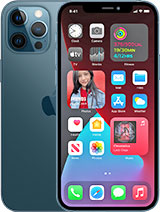
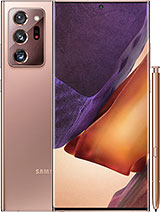

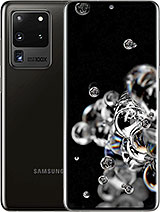
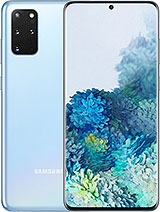
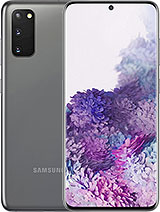
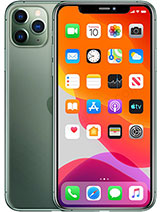










![Finally! Top 25 FREE Mobile Games [2020] | Android & iOS](https://img.youtube.com/vi/VzzpoKVw4ds/maxresdefault.jpg )












